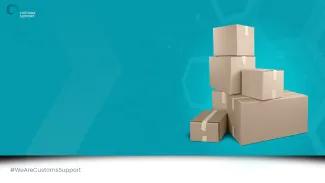Manufacture
Before your items are assembled, all the raw materials and parts need to be collected at the manufacturing plant. If these are imported, then the manufacturer may use special processes such as Inward Processing Relief (IPR) to reduce duty spend – which reduces the cost to them and you.
Sales and selection of shipping terms
Assuming your goods weren’t made to order, they need to be sold once they are assembled. This involves selecting INCOTERMS that are appropriate to the type of shipment and the level of risk the buyer and seller are comfortable with.
In addition to INCOTERMS, payment terms must also be negotiated by the buyer and seller. Examples of payment terms are on collection, upon loading to vessel, and upon delivery.
The payment terms also indicate a risk to the seller or buyer because goods could be shipped without payment or paid for without being shipped with urgency. This is why Bills of Lading and other title documents are so important in the shipping process – withholding the sending of documents allows the seller to maintain ownership of the goods until payment has been received, regardless of the goods’ position in transit.
Export customs and shipping
Once the sale is agreed and your goods are ready for collection, it’s time to arrange shipping. No matter whether your shipment via road, air, or sea, an export customs clearance must be completed for the goods to leave the country.
Due to the nature of exports, this is often done in two stages. The export customs declarant will create a pre-lodged clearance and give the Declarant Unique Consignment Reference (DUCR) to the carrier, who will then assign it to the Movement Reference Number on the manifest. This is so that last minute information such as container numbers and seal IDs don’t hold up the creation of the clearance, and so that multiple entries aren’t required if the vessel, flight, or trailer changes.
It is during this stage that the goods will first be allocated a commodity code. The type of code will depend on the country of origin, but most countries use the HS code classification system.
(Related: how many tariff codes are on your Christmas tree?)
Import customs, release, and delivery to warehouse
Upon arrival at the port of destination, an import customs clearance is required for your goods to move across the border. Duty and VAT may be payable, but these can be reduced if there is preferential origin. All taxes must be settled before customs release unless your goods are moving to a bonded warehouse or you are using a special procedure such as SCDP (UK only).
Separate to customs clearance is the carrier release. Depending on which payment terms you have used and the method of endorsing the Bill of Lading (for air and sea movements), you may need to present this title document to the carrier to confirm to them you are authorised to collect the goods. The carrier will also require payment of any of their outstanding shipping costs before release.
Once customs and the carrier have released the goods, you can move them to the warehouse for unloading and distribution. The exception to this is if you have a pallet moving by air freight, LCL (less than container load), or pallet network, in which case you will be required to collect from a warehouse instead of a port.
Distribution from warehouse to store
Once your goods are unpacked in your warehouse, they are delivered to your local store so that you can collect them. Alternatively, they are made available for fulfilment warehouses to deliver direct to your door when using online merchants.
Note that all taxes must be paid before the goods can be released if you are using a customs warehouse to suspend duty and VAT until the point of sale.
Customs Support provides a full customs service throughout Europe
Whether you need import clearance, export clearance, goods classification, help with special procedures, or just a second look over your customs compliance, we are here for you.
You can rely on us across Europe to provide you with the local knowledge and deep expertise to save money and remain compliant with customs authorities. If you’d like us to perform a customs quick scan and get you ready for trading in 2024, contact us today.














